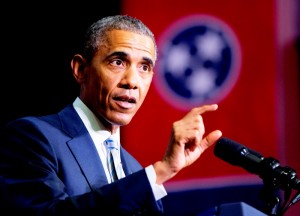
Thousands of low-income students will be eligible for federal Pell grant money to take college courses while still in high school.
The opportunity is part of an experimental program announced on October 30 by the Obama administration. The Education Department said the administration will invest up to $20 million in the 2016-17 school year — helping up to 10,000 students.
High school students who take college courses through “dual enrollment” programs will be eligible. Those programs allow high school kids to take classes at a local college, often earning college credit.
“A postsecondary education is one of the most important investments students can make in their future. Yet the cost of this investment is higher than ever, creating a barrier to access for some students, particularly those from low-income families,” Education Secretary Arne Duncan said in a statement.
Pell grants are for low-income people and do not have to be repaid.
The department has the authority to create the pilot program under the experimental sites section of the Higher Education Act of 1965. It gives federal officials flexibility to test the effectiveness of temporary changes to the way federal student aid is distributed.
Usually, so-called “experimental site” programs last for three years. But the department is hoping that this will last for at least four years, to cover students all through high school.
The government awarded $28.7 billion in Pell grants to almost 8.3 million students in the 2015 fiscal year. The average Pell grant was about $3,600. The maximum Pell award for the current 2015-2016 school year is $5,775.
Since 2008, the Obama administration has increased Pell funding by 70 percent. In July, the administration announced a new experimental program, called the “Second Chance Pell Pilot” program, which extends Pell money to some federal and state prisoners taking college courses while still behind bars. Mostly prisoners who are eligible for release in the next five years will be eligible to apply.



